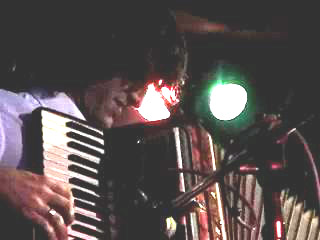
Culture
The Last Line of Resistance
There's nothing quite like "la noche portena". The city comes alive, and as poet Horacio Ferrer once wrote, 'people become demi-gods in Buenos Aires' night.'
Nightlife begins between 10 and 11, with dinner after a movie or a play, and lasts till the early hours of the morning. A tour of places like Palermo and Recoleta will reveal this city's most important treasure - its beautiful, careless youth drinking and eating in the numerous sidestreet cafes and bars.
Buenos Aires teems with life, but long-time residents say that nightlife is not the same anymore. Many youngsters have left the country, and many more are planning to leave.
After attracting millions of European immigrants for decades, Argentina is losing its youth. In 2000, more than 140,000 Argentines, mostly professionals, left for better shores.
Lines form around foreign embassies as the grandsons and great-grandsons of Italians, German and Spaniards reclaim their right to European citizenship. Even the Israeli embassy is flooded with demands from Argentina's 250,000-strong Jewish community.
![]() Video: Pequena Orquesta Reincidentes at Unione e Benevolenza
Video: Pequena Orquesta Reincidentes at Unione e Benevolenza

Artists in La Boca
The Argentine youth who remains seeks its refuge in the arts, which is witnessing a surge in activity even though the previous governments have severely cut back on cultural subsidies. According to political analyst Rosendo Fraga, more than 70 percent of portenos - literally "port people", as the inhabitants of Buenos Aires are known - read books, 46 percent go to the movies, 28 percent have visited museums and 23 percent have attended theater plays.
Argentina's filmmakers made 54 movies last year, one of which, "Son of the Bride", was an Oscar nominee. Also people are rediscovering the dance of their grandparents. The number of milongas, the place where people meet to dance tango, multiplied by five in the last decade, to around 100.
